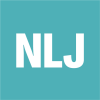Employee Representatives on Company Boards – Hostages, Renegades or Fierce Opponents?
DOI:
https://doi.org/10.18291/njwls.v10i2.120820Keywords:
Labor Market Institutions & Social Partners, Organization & ManagementAbstract
Members of company boards in Scandinavia are legally obliged to act in accordance with the interests of the company. How to interpret this obligation has been on the agenda ever since the employees were given the right to elect their own board members in the early 1970s. This article, based on data from a European survey among board-level employee representatives (BLERs), compares Swedish and Norwegian BLERs and asks whether the conflict between the company’s interests and the employees’ interests (still) constitutes a predicament? The analysis indicates that this alleged conflict belongs to the initial debate and that it is less relevant to the current BLERs. The differing election principles in Sweden (BLERs are appointed by the local trade unions) and Norway (BLERs are elected by all the employees in the company) do not alter this conclusion.
Downloads
Published
How to Cite
Issue
Section
License
The Copyright Holder of this Journal is the authors and the Journal. Normally the journal use the CC-BY NC-ND 4.0 licence.
Exceptions to the license terms may be granted
If you want to use content in the Journal in another way then described by this license, you must contact the licensor and ask for permission. Contact Annica Asp at annica.asp@kau.se. Exceptions are always given for specific purposes and specific content only.
Sherpa/Romeo
The Journal is listed as a blue journal in Sherpa/Romeo, meaning that the author can archive post-print ((ie final draft post-refereeing) and author can archive publisher's version/PDF.
Copyright of others
Authors are responsible for obtaining permission from copyright holders for reproducing any illustrations, tables, figures or lengthy quotations previously published elsewhere.
Archives policy
All published material is archived at the Danish Royal Library in conformity with the Danish rules of legal deposit.
Plagiarism screening
We do not screen articles for plagiarism. It is the responsibility of the authors to make sure they do not plagiate.




